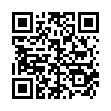|
This article is cited in 6 scientific papers (total in 6 papers)
The Feigin Tetrahedron
Dylan Rupel
Department of Mathematics, Northeastern University, Boston, MA 02115, USA
Abstract:
The first goal of this note is to extend the well-known Feigin homomorphisms taking quantum groups to quantum polynomial algebras. More precisely, we define generalized Feigin homomorphisms from a quantum shuffle algebra to quantum polynomial algebras which extend the classical Feigin homomorphisms along the embedding of the quantum group into said quantum shuffle algebra. In a recent work of Berenstein and the author, analogous extensions of Feigin homomorphisms from the dual Hall–Ringel algebra of a valued quiver to quantum polynomial algebras were defined. To relate these constructions, we establish a homomorphism, dubbed the quantum shuffle character, from the dual Hall–Ringel algebra to the quantum shuffle algebra which relates the generalized Feigin homomorphisms. These constructions can be compactly described by a commuting tetrahedron of maps beginning with the quantum group and terminating in a quantum polynomial algebra. The second goal in this project is to better understand the dual canonical basis conjecture for skew-symmetrizable quantum cluster algebras. In the symmetrizable types it is known that dual canonical basis elements need not have positive multiplicative structure constants, while this is still suspected to hold for skew-symmetrizable quantum cluster algebras. We propose an alternate conjecture for the symmetrizable types: the cluster monomials should correspond to irreducible characters of a KLR algebra. Indeed, the main conjecture of this note would establish this “KLR conjecture” for acyclic skew-symmetrizable quantum cluster algebras: that is, we conjecture that the images of rigid representations under the quantum shuffle character give irreducible characters for KLR algebras. We sketch a proof in the symmetric case giving an alternative to the proof of Kimura–Qin that all non-initial cluster variables in an acyclic skew-symmetric quantum cluster algebra are contained in the dual canonical basis. With these results in mind we interpret the cluster mutations directly in terms of the representation theory of the KLR algebra.
Keywords:
cluster algebra; Hall algebra; quantum group; quiver Hecke algebra; KLR algebra; dual canonical basis; Feigin
homomorphism; categorification.
Received: September 11, 2014; in final form March 3, 2015; Published online March 19, 2015
Citation:
Dylan Rupel, “The Feigin Tetrahedron”, SIGMA, 11 (2015), 024, 30 pp.
Linking options:
https://www.mathnet.ru/eng/sigma1005 https://www.mathnet.ru/eng/sigma/v11/p24
|

| Statistics & downloads: |
| Abstract page: | 212 | | Full-text PDF : | 42 | | References: | 47 |
|




 Contact us:
Contact us: Terms of Use
Terms of Use
 Registration to the website
Registration to the website Logotypes
Logotypes








 Citation in format
Citation in format 
